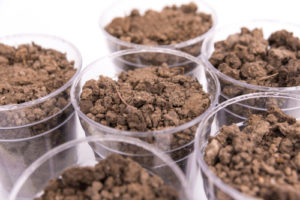Water & Environmental Application Note Compendium 2020/2021

Over the past few years, here at Anatune we have significantly developed our capabilities and automated solutions for Environmental and Water Analysis. This has enabled us to achieve several important developments in terms of instrument technology and applications knowledge.
Therefore, in order to help analysts, laboratories and professionals from across the Water & Environmental sector, we have produced a compendium of the most significant Application Notes we have produced in that time.
Explore this valuable resource below and find out all about how Anatune is driving the development of water and environmental analysis with techniques such as SIFT-MS, Dispersive Liquid-Liquid MicroExtraction (DiLLME), GC-QQQ, and Negative-Ion Sift-MS.
Water & Environmental Application Notes 2020 – 2021
Water Analysis:

AS251: Real-Time Analysis of VOC Production From An Algae Bioreactor Using Select Ion Flow Tube Mass Spectrometry (SIFT-MS)
Algae can be cultivated in large bioreactors, using a range of technologies, for purposes as diverse as biomass production, water treatment and CO2 fixation. Algae biomass can be extracted or refined to produce compounds. For example; bioethanol or higher value products such as fatty acids and protein.
Careful monitoring of the health of the bioreactor can significantly increase yields. This leads to a commensurate increase in income from harvested products.
The ability of Select Ion Flow Tube Mass Spectrometry – SIFT-MS – to measure gas phase volatile organic compounds (VOCs), in real-time, offers a unique approach to monitoring critical compounds produced by the bioreactor. Potentially at low parts-per-billion by volume (ppbV) levels.
This Application Note demonstrates the ability of Select Ion Flow Tube Mass Spectrometry – SIFT-MS. On a pilot scale facility over several weeks, it shows the utility of this approach in maximising outcomes.
CLICK HERE to download the full AS251: Real-Time Analysis of VOC Production From An Algae Bioreactor Using Select Ion Flow Tube Mass Spectrometry (SIFT-MS) Application Note
AS250: Full Method Validation of Glyphosate, AMPA and Glufosinate in Water Analysis Using The Anatune Robotic DILLME Analyser
A successful and validated clean-up method for Dispersive Liquid-Liquid MicroExtraction (DiLLME) to automate the analysis of glyphosate, aminomethylphosphonic acid (AMPA) and glufosinate in water.
Reducing the need for a concentration step, a small sample size of 5 mL was used and fully automating the sample preparation procedure.
This Application Note demonstrates the advantages of this automated solution. For example; reducing the manual preparation steps, and the improved reproducibility that comes with an automated system and lower consumable costs.
CLICK HERE to download the full AS250: Full Method Validation of Glyphosate, AMPA and Glufosinate in Waters Using The Anatune Robotic DILLME Analyser Application Note

AS249: Taste and Odour Water Analysis Using The Anatune Robotic DiLLME Analyser
A successful and validated method for Dispersive Liquid-Liquid MicroExtraction (DiLLME) to automate the extraction of geosmin, 2-methylisoborneol and other taste and odour compounds in water.
Using the sensitivity and selectivity of the Agilent 7010B High Efficiency Source, small sample sizes of 8 mL were used whilst achieving very low limits of detection.
This automated solution provides significant advantages for water analysis. For example; reducing the manual preparation steps and the improved reproducibility provided by an automated system.
CLICK HERE to download the full AS249: Taste and Odour Water Analysis Using The Anatune Robotic DiLLME Analyser Application Note
AS247: Full Method Validation of Polycyclic Aromatic Hydrocarbons (PAHs) In Water Analysis Using the Anatune Robotic DiLLME Analyser
A successful and validated method for Dispersive Liquid-Liquid MicroExtraction (DiLLME) to automate the extraction of polycyclic aromatic hydrocarbons in a range of waters.
Using the sensitivity of the Agilent 5977B High efficiency Source, sample sizes were reduced to 9 mL whilst achieving very low limits of detection.
This automated solution provides significant advantages for water analysis. These advantages include maintaining consistent precision over the manual or semi-manual liquid extraction techniques typically used for sample preparation.
CLICK HERE to download the full AS247: Full Method Validation of Polycyclic Aromatic Hydrocarbons (PAHs) In Waters Using the Anatune Robotic DiLLME Analyser Application Note

AS243: Method Validation of Volatile Organic Compounds (VOCs) in Water Using the Anatune Robotic VOC Analyser
Measurement of volatile organic compounds (VOCs) in drinking and wastewater is a well-established analytical test in water and environmental laboratories. This is due to its public importance and numerous regulatory drivers. Automated VOC analysis is less established.
These tests are used to provide supporting data for various regulatory requirements. These include: Discharge consent limits set in environmental permits issued by the Environment Agency. Regulatory limits in potable water set and enforced by the Drinking Water Inspectorate.
Static headspace extraction with gas chromatography mass spectrometry (HS-GC-MS) is an established technique for this analysis.
This application note demonstrates how automation, such as autospiking and Maestro PrepAhead, enables the new Anatune High Throughput Fully Automated VOC robotic solution to provide, high data quality and robust automated VOC analysis for water and environmental laboratories seeking to increase sample numbers, solve sample backlog issues or reduce cost per test due to improved right first-time determinations.
CLICK HERE to download the full AS243: Method Validation of Volatile Organic Compounds (VOCs) in Water Using the Anatune Robotic VOC Analyser Application Note.
AS124: Fully Automated System for Preparing and Analysing Samples for NDMA in Potable Water Using GC-QQQ
Fully Automated Sample Preparation System for Preparing and Analysing Samples for NDMA in Potable Water Using GC-QQQ:
The formation of N-Nitrosodimethylamine (NDMA), in treated sewage and environmental waters has been known for around 40 years.
NDMA is formed as a disinfection byproduct during chloramination of wastewaters and drinking waters. It has been classified as “probably carcinogenic to humans” by both the International Agency for Research on Cancer (IARC) and the US Environmental Protection Agency (USEPA).
This application note details a fully automated sample preparation solution incorporating solid phase extraction, to enrich NDMA from water samples. Large volume injection (LVI) is also automated to a GC-QQQ.
CLICK HERE to download the full AS124: Fully Automated System for Preparing and Analysing Samples for NDMA in Potable Water Using GC-QQQ Application Note

Environmental Analysis:
AS244: Methanolic Extraction of Soils by Automated Selected Ion Flow Tube Mass Spectrometry (SIFT-MS)
Soil can become contaminated with benzene, toluene, xylenes and ethylbenzene (BTEX) from a number of sources. This contamination may pose health and ecological risks alike. Automated SIFT-MS is a powerful technique for the analysis of volatiles, from a range of different matrices, and benefits from significant throughput gains versus more conventional chromatographic techniques.
Methanolic extraction followed by GC-MS analysis is a common method for determination of BTEX in soil. This Application Note demonstrates that GC-MS methods, even those with more complex sample preparation requirements, can readily be converted to automated SIFT-MS methods. The Note also explains all the throughput gains achievable and ease of analysis that this brings.
Working through a standard validation procedure, we demonstrate that robust and reliable routine analytical methods can be developed and validated. Additionally, the data gives confidence to results obtained during real-time analysis, where validation of methods can be more challenging.
CLICK HERE to download the full AS244: Methanolic Extraction of Soils by Automated Selected Ion Flow Tube Mass Spectrometry (SIFT-MS) Application Note
AS233: Speciation of Dichloromethane and Chloroform Using Negative Ion SIFT-MS
Organochlorine compounds, along with other VOCs such as the BTEX group of compounds (benzene, toluene and the xylenes) continue to be significant contaminants in air, soil and water. Various techniques have been employed to analyse the compounds, the most common being purge and trap followed by GC analysis. These techniques are generally slow, and the need to remove water from the matrix prior to injection adds further complications. Direct analysis using SIFT-MS mitigates this step and can lead to significant increases in throughput. This enables environmental laboratories to greatly increase the number of samples tested, and decrease turnaround times and cost. However, one drawback with single polarity SIFT-MS, is its inability to effectively speciate chloroform and dichloromethane.
This Application Note shows how negative ion SIFT-MS makes it possible to directly speciate dichloromethane and chloroform, in real-time. This enables straightforward, fast analysis of two important compounds without compromising others in the VOC suite.
CLICK HERE to download the full AS233: Speciation of Dichloromethane and Chloroform Using Negative Ion SIFT-MS: Application Note.

CLICK HERE to view our complete Application Note Library
EXPLORE our automated analytical solutions for the Water & Environmental Sector
CONTACT US to speak to our experts and discover how we’re redefining what it means to be an analytical solutions provider

